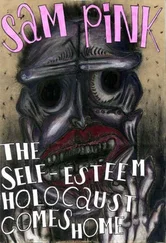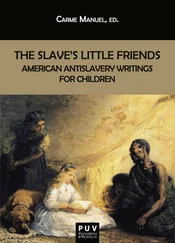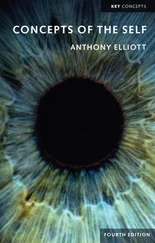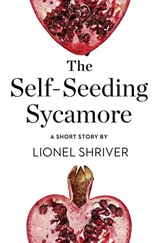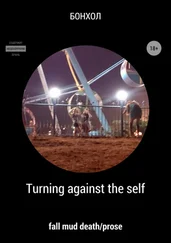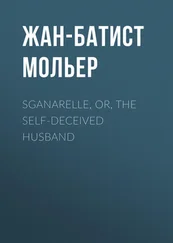AAVV - Constructing the Self
Здесь есть возможность читать онлайн «AAVV - Constructing the Self» — ознакомительный отрывок электронной книги совершенно бесплатно, а после прочтения отрывка купить полную версию. В некоторых случаях можно слушать аудио, скачать через торрент в формате fb2 и присутствует краткое содержание. Жанр: unrecognised, на английском языке. Описание произведения, (предисловие) а так же отзывы посетителей доступны на портале библиотеки ЛибКат.
- Название:Constructing the Self
- Автор:
- Жанр:
- Год:неизвестен
- ISBN:нет данных
- Рейтинг книги:3 / 5. Голосов: 1
-
Избранное:Добавить в избранное
- Отзывы:
-
Ваша оценка:
- 60
- 1
- 2
- 3
- 4
- 5
Constructing the Self: краткое содержание, описание и аннотация
Предлагаем к чтению аннотацию, описание, краткое содержание или предисловие (зависит от того, что написал сам автор книги «Constructing the Self»). Если вы не нашли необходимую информацию о книге — напишите в комментариях, мы постараемся отыскать её.
Constructing the Self — читать онлайн ознакомительный отрывок
Ниже представлен текст книги, разбитый по страницам. Система сохранения места последней прочитанной страницы, позволяет с удобством читать онлайн бесплатно книгу «Constructing the Self», без необходимости каждый раз заново искать на чём Вы остановились. Поставьте закладку, и сможете в любой момент перейти на страницу, на которой закончили чтение.
Интервал:
Закладка:
Part 1 “Subversive (Re)creations of the Self—Past and Present” centers on African American life-writing and investigates the political motives of black authors, most of whom often used subversive strategies to construct their selves and dismantle the foundations of a racist southern society. In the opening essay of this collection, Trudier Harris examines the different and fluctuating autobiographical impulses that have moved African American southern writers, 6 including herself as the author of a memoir. Early life narrators like Frederick Douglass, Harriet Jacobs and Booker T. Washington clearly had a political purpose and were more committed to community than to literary self-creation. For Harris, the tradition of what she calls “ individualistic life narration ” [her emphasis] starts in the 1920s and 1930s, with Langston Hughes and Claude McKay, and is further confirmed in the autobiographical works by Richard Wright and Zora Neale Hurston, though they constitute an “exception.” Life narrators like Alice Walker and Anne Moody, who penned their stories during the Civil Rights era, clearly had a social consciousness, wanted to change the South, and embraced activism in their lives and life-writing. Maya Angelou’s classic memoir, however, written in 1970, is “less activist-oriented” and more focused on the individual. Although region and landscape are important for southern life-writing, other factors like Hurricane Katrina have defined the life narratives of several African Americans like Natasha Trethewey, who uses what Harris calls “self-erasure” to highlight the destructive effect of the disaster on people’s lives. With her memoir, entitled Summer Snow: Reflections from a Black Daughter of the South (2003), Trudier Harris herself joins a long line of academic life narratives written by African Americans since the 1990s. Scholarly in her approach yet deeply personal when discussing her own life-writing process, Harris ultimately finds a sense of connectedness with the autobiographical urge of those who preceded her.
The “political” impetus of African American life-writing is also at the core of Robert H. Brinkmeyer’s essay, in which he discusses Booker T. Washington’s subversive use of his autobiographical writings— Up from Slavery and Working with the Hands— as metaphorical levers to create social change. Brinkmeyer explores “how Washington constructed himself” and at the same time sought “to construct a more racially tolerant South” through his life narratives, which function as tools for change. Challenging the traditional view of Washington’s ideas as accommodationist and reactionary, Brinkmeyer argues that Washington’s philosophy, deeply influenced by Benjamin Franklin’s canonical Autobiography and his notion of the self-made man, is more complex than has usually been acknowledged. Brinkmeyer focuses on Washington’s promotion of “education and meaningful labor” in his life-writings, which “simultaneously [engage] head, heart, and hand” or “intelligence, morality, and artisanship.” Brinkmeyer understands “this three-way engagement” as “the foundation of Washington’s most far-reaching and subversive tactic for dismantling the racist structures of southern society.” Thus Washington’s impulse to write, according to Brinkmeyer, emerges from his conviction that a new appreciation of manual work should allow him to produce a social change, remake southern attitudes towards blacks, and create a new order. The “metaphor of construction” he frequently uses and his educational philosophy were in line with the proposals of the followers of the Arts and Crafts Movement, who promoted a new social and economic order based on the work of craftsmen. Brinkmeyer contends that, even if not obvious at first, Washington’s theories on the education of African Americans are charged with subversiveness and disruptive power.
Part 2 “The Legacy of Race: Reconciling Selves” focuses on the lasting influence of the racial divide as a stimulus for the autobiographical writings of different authors, who have variously tried to reconcile their selves, atone for a racist past and find true brotherhood. Jennifer Ritterhouse centers on life writing that tells stories of childhood racial training during the Jim Crow era. Herself a historian, Ritterhouse reflects on the difficulty of using autobiographical material as a source of historical information, thus addressing the problem of the “truth-value of autobiography” when it contains elements of fiction. Both black and white autobiographers who grew up in the Jim Crow era narrate what Ritterhouse calls southern “dramas of social inequality” in which children were gradually socialized into the southern racial system. In fact, Ritterhouse identifies Fred Hobson’s southern “rage to explain” as the impulse behind many of the white “autobiographical accounts of childhood events,” which are “much like the ones African American autobiographers recount, but with the roles reversed.” These childhood stories also share the same “political intent” as black autobiography, in that the white adults who have undergone a moral transformation also seek to challenge the Jim Crow system and change the South. Despite the presence of some fictional elements, Ritterhouse believes that these retrospective childhood stories are not just “literary constructs” but valid sources for historians who “tend to be most interested in the patterns, the scripts—that is, in the social and cultural than the individual level.” For these white life narrators, according to Ritterhouse, “the autobiographical impulse derives from a feeling that they have achieved a mature viewpoint on past events” and from their need to repeat that unacceptable moment of the past to correct it, making amends with the racial attitudes they held then.
Elizabeth Hayes Turner discusses Melton A. McLaurin’s autobiography Separate Pasts (1987) as one more example of what Fred Hobson calls “conversion narratives” to reconcile an apologetic past self. Like Ritterhouse, Turner steps into the complex middle ground between history and autobiography to analyze the life narrative of historian Melton A. McLaurin. For him, even if memory is “the most subjective of all sources,” it is also “a valuable source of both fact and truth.” Turner distinguishes three stages in McLaurin’s self-transformation: his “child self,” which learns the racial prejudices of the Jim Crow South; his “adolescent self,” which rebels against parental regulations and sees his parents’ world as illogical; and finally his “adult self,” which seeks to “reform that which is absurd”—southern segregation—and can finally find redemption. In his autobiography McLaurin records “the gradual evolution of his own critical thinking about race relations” and “the profound impact of the inequalities in southern society upon his gradual awareness.” Turner identifies McLaurin’s rejection of the role of the privileged white man as the “point of conversion” in his autobiography. But to reach this crucial juncture, McLaurin had to experience a series of enlightening episodes through his daily encounters with black people at his grandfather’s convenience store. His conversion reflects a gradual shift from the influence of white supremacist doctrines to a weakening of his racial prejudice through conversations with black men and women, which later turns into guilt. His reflections on family paternalism, a fake escape route from guilt, finally open his eyes to the pernicious effects of southern paternalism as an insurmountable obstacle keeping African Americans from achieving equality.
Pearl McHaney’s essay focuses on twice US Poet Laureate Natasha Trethewey, an example of the biracial national identity of the South and the US, whose work reflects her attempts to cope with the complicated legacy of race and reach self-reconciliation. Pearl McHaney analyses Trethewey’s poetry and prose, which has a markedly autobiographical quality, finding countless samples of how she interweaves her personal story with regional and national history in her work. McHaney argues that traces of Trethewey’s life experience are discernible in much of her poetry and distinguishes different stages in the poet’s literary output. The poems in Domestic Work reflect the poet’s early attempts “to not focus on her mother’s murder” by writing poems about her grandmother. McHaney states that in her second collection of poems, Bellocq’s Ophelia , Trethewey adopts a “thicker mask,” but even so it reveals “the poet’s life still.” According to McHaney, it is in Trethewey’s third book, Native Guard , that her “voice sounds loudest in telling her life story.” In the first section of the book, Trethewey remembers her mother and recreates her grief over her mother’s death; in the second section, she “brings to light the erased histories of the South”; and in the final third section, she weaves “the personal and national life stories together.” Trethewey’s complicated relationship with her father—already manifested in some of her earlier pieces—is the source of inspiration for many of the poems in Thrall . Finally, McHaney analyzes Beyond Katrina , a blending of her poems and the poetry by her half-brother written from prison after the Katrina disaster. Trethewey’s work reflects her constant effort to deal with “her complicated legacies,” which include an estranged white poet-father and a dead black mother who can only be a muse.
Читать дальшеИнтервал:
Закладка:
Похожие книги на «Constructing the Self»
Представляем Вашему вниманию похожие книги на «Constructing the Self» списком для выбора. Мы отобрали схожую по названию и смыслу литературу в надежде предоставить читателям больше вариантов отыскать новые, интересные, ещё непрочитанные произведения.
Обсуждение, отзывы о книге «Constructing the Self» и просто собственные мнения читателей. Оставьте ваши комментарии, напишите, что Вы думаете о произведении, его смысле или главных героях. Укажите что конкретно понравилось, а что нет, и почему Вы так считаете.

